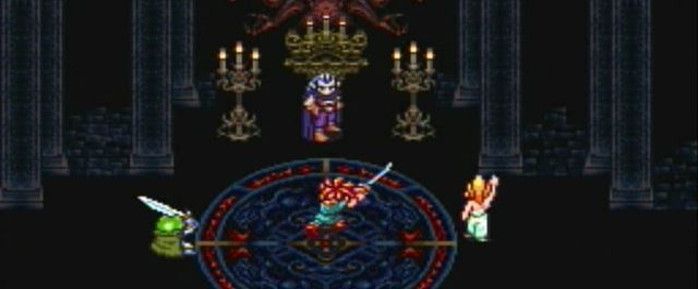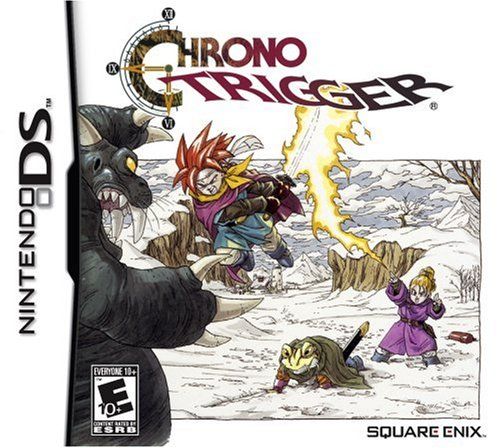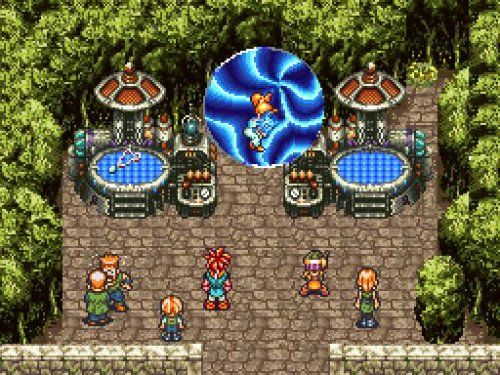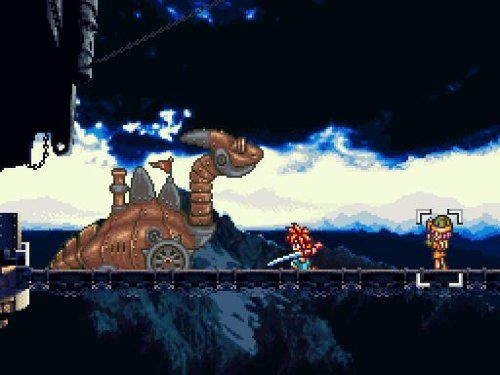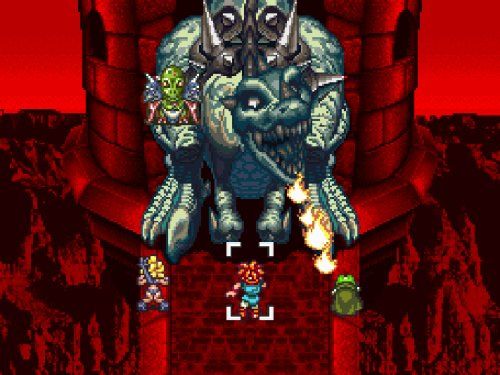Handheld gaming is more than a compromise of power and portability. Whether it’s the ability to play anywhere, multitask or hold an entire console in your hands, it’s a special experience consoles have never replicated. In a world where high resolutions and teraflops reign supreme, we take a look at a portable relic every month and reflect on what makes it memorable. Be warned, spoilers may occasionally populate these articles.
Chrono Trigger is the latest casualty of classic RPGs to receive a PC release that is nothing more than the shoddy mobile version. Seeing such great games being reduced to a format that insults their legacy is disheartening to the fans, but fortunately the inconsistent quality of reissued Square Enix games means that they sometimes put out something that exemplifies how a port should be handled, with Chrono Trigger for the Nintendo DS being in the latter category. Chrono Trigger was originally released for the SNES in 1995 and became available for a new generation of gamers and longtime fans on the handheld platform in 2008. It is considered to be one of the greatest games to ever grace the SNES and holds up incredibly well being just as enjoyable today as it was in 2008 and 1995.
Chrono Trigger begins with a swordsman with a punk rock hairdo named Crono going to check out his friend Lucca's new teleportation device at the Millennial Fair. On his way he bumps into a cute blonde named Marle who he ends up escorting around the fairgrounds. Eventually they go to Lucca's device and the Telepod has a rather unusual reaction to Marle's pendant, making her disappear and not reappear where she was supposed to. The crowd of spectators quickly walk away from the attraction as if they didn't just witness a young lady get vaporized and Crono decides to bravely hold the pendant while Lucca activates the Telepod again, which sends Crono 400 years into the past.
This leads into possibly the greatest time-traveling adventure ever experienced in a video game. Crono and company visit various time periods such as the post-apocalyptic future inhabited by robots, a prehistoric era where humans and reptiles are at war and an ancient civilization that uses energy harvested from deep in the earth to reach incredible technological advancements. The energy source turns out to be a parasite that traveled from outer space to their world millions of years ago called Lavos, whose awakening in 1999 brings the world to the brink of destruction. This is of course an extreme oversimplification of the story, where time travel is discovered by accident and it takes a few haphazard trips throughout history to figure out the finer points of time travel and what Lavos is and when it originally arrived.
Time travel plots by their very nature can be messy, and while someone could probably nitpick at details to find fault, Chrono Trigger's story is among the strongest of its era. The pacing at which everything unravels is just right for keeping the player engaged in advancing the story, and even within the limits of how detailed games could be in the 16-bit era, each character feels alive and unique in a way where the player actually cares about them and their events. There is a plot point where a major character dies and an optional quest to bring this individual back to life, and the masterful approach to game design gives both the death and revival some emotional impact.
The player can choose to finish the game and have a realistic chance of success when the Black Omen appears, but there are so many optional side quests that open up. An interesting thing about several of these quests is their impact will be seen in future time periods. In the year 1000 AD there are the Northern Ruins, but having them repaired in 600 AD will change the name to Hero's Grave and this is also one of the many places where the sealed chest can be examined in 600 AD where a reaction to the pendant will improve the treasure if it is taken in 1000 AD. Of course, after we snag the treasure in 1000 AD we go back to the year 600 AD to get the weaker but still useful treasure. One of the more memorable sidequests that has the least impact on gameplay involves Lucca and her mom. After Robo ends up restoring a forest Lucca is involved in a discussion where she is asked if there was a single moment in her past she could change. After everyone falls asleep, a gate opens up that she can travel through and she is back at her house years ago on the day where an accident crippled her mother. Lucca is able to prevent the accident and if the player goes to her house later nothing has changed except her mom gets up and walks, and is portrayed as quite an active person, even wearing out her husband Taban by dancing so much at the Millennial Fair. Of course, the player can also choose not to act in the flashback, and Lara will remain withdrawn and sedentary should the player return to Lucca's house.
Chrono Trigger may not have invented the concept of New Game Plus, but as far as I can remember, this was my first experience with it. This feature lets player start the game over with their current levels and the majority of their accumulated equipment. This naturally made progressing through the game quickly easy, as several of the earlier boss fights could end in a single turn but there was a greater reason to use this feature. Chrono Trigger has over a dozen endings, and Lavos is accessible quite early in the game, but during the initial playthrough the characters will be too weak to have a shot at winning the fight. Some of the endings are humorous, such as one where the frogs end up ruling over Guardia. The best ending is when Crono takes on Lavos all by himself at the beginning of the game, which I typically did about when he was at level seventy though it probably could be done before that. To get this ending Crono just goes to the right Telepod platform instead of the left and this takes him straight to Lavos, where the player can meet the Chrono Trigger Dream Team at the end of time.
On that note, this fabled Dream Team of developers was used to generate hype for Chrono Trigger in the press prior to its release, and while hype should always be taken with a massive bucket of salt, this title actually lived up to it. This dream team was composed of Akira Toriyama, Nobuo Uematsu, Yuji Horii, Kazuhiko Aoki and Hironobu Sakaguchi. That's not to say there weren't other noteworthy talents that worked on Chrono Trigger such as composer Yasunori Mitsuda and director Yoshinori Kitase. As music fans know super groups don't always live up to the collective talents of their members, but this super group happened to deliver one of the greatest games ever made. One of the features they implemented was a tweak on the traditional turn-based battle system used in JRPGs. Techs are special attacks and spells available to all characters, but certain pairings open up double techs or triple techs, where two or three characters will do a single action, such as lighting Crono's sword on fire or adding a flare attack to the giant frog attack. This gave players reason to experiment with different party configurations, just to see what attacks end up working the best.
The DS version of Chrono Trigger is based off of the original SNES game and not the PlayStation port with abysmally slow load times though the anime cutscenes that were added with the Sony port were included in the handheld version. Some added features to the DS were a newly-translated script, optional post game dungeons, a monster-fighting arena and the implementation of the second screen where one screen covers the menus and the other handles the gameplay. There's also the option to play the game with touchscreen controls, but most of these extra features don't do a whole lot to enhance the game aside from clutter control on the small screen. But honestly this isn't a game that needs enhancing and the only advantage the original SNES game has over the handheld is screen size.
Get more Pocket Power. Click here to view every Pocket Power so far and prepare for a pocket-sized stroll down memory lane.

